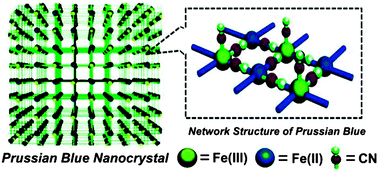New faces of porous Prussian blue: interfacial assembly of integrated hetero-structures for sensing applications
Abstract
Prussian blue (PB), the oldest synthetic coordination compound, is a classic and fascinating transition metal coordination material. Prussian blue is based on a three-dimensional (3-D) cubic polymeric porous network consisting of alternating ferric and ferrous ions, which provides facile assembly as well as precise interaction with active sites at functional interfaces. A fundamental understanding of the assembly mechanism of PB hetero-interfaces is essential to enable the full potential applications of PB crystals, including chemical sensing, catalysis, gas storage, drug delivery and electronic displays. Developing controlled assembly methods towards functionally integrated hetero-interfaces with adjustable sizes and morphology of PB crystals is necessary. A key point in the functional interface and device integration of PB nanocrystals is the fabrication of hetero-interfaces in a well-defined and oriented fashion on given substrates. This review will bring together these key aspects of the hetero-interfaces of PB nanocrystals, ranging from structure and properties, interfacial assembly strategies, to integrated hetero-structures for diverse sensing.


 Please wait while we load your content...
Please wait while we load your content...